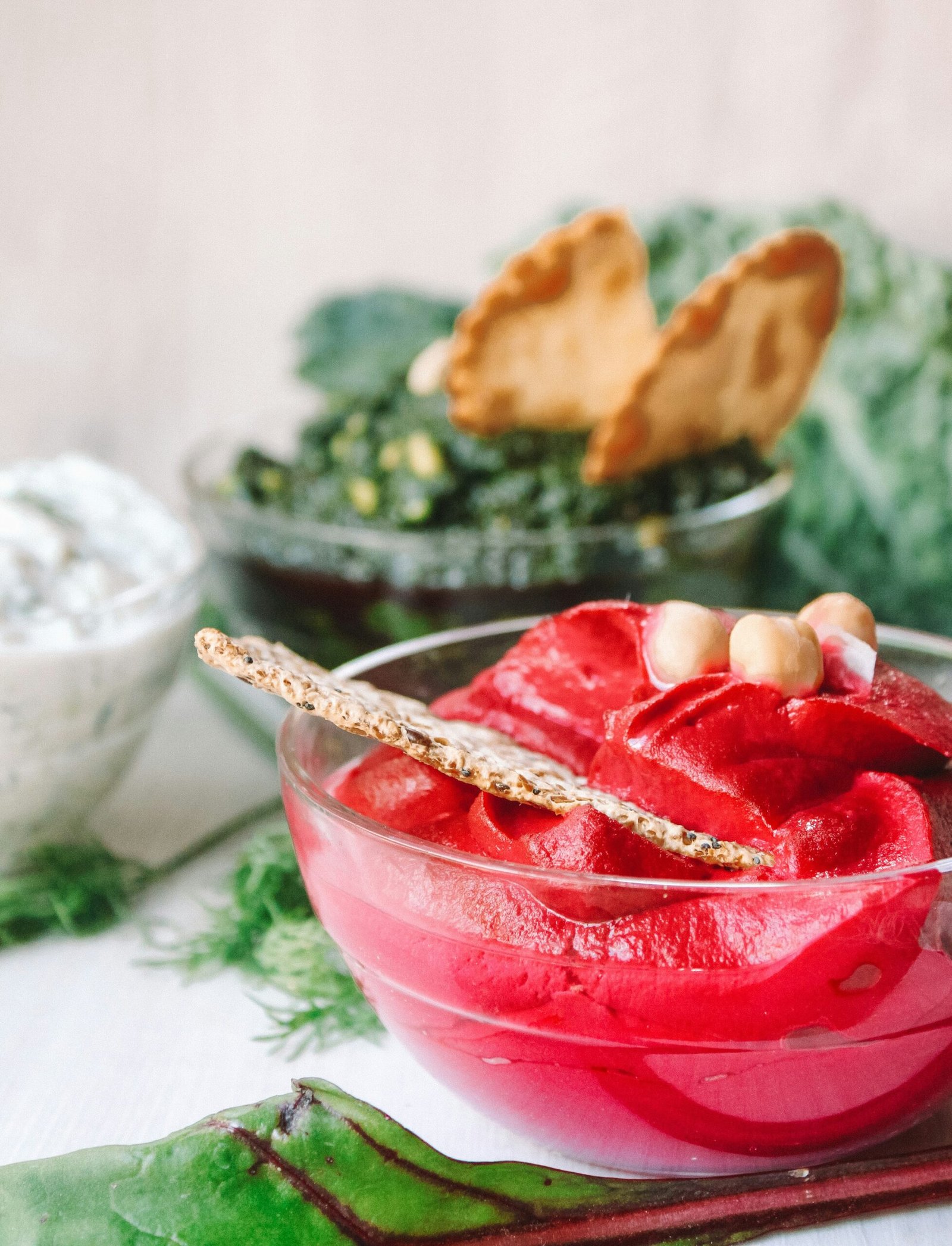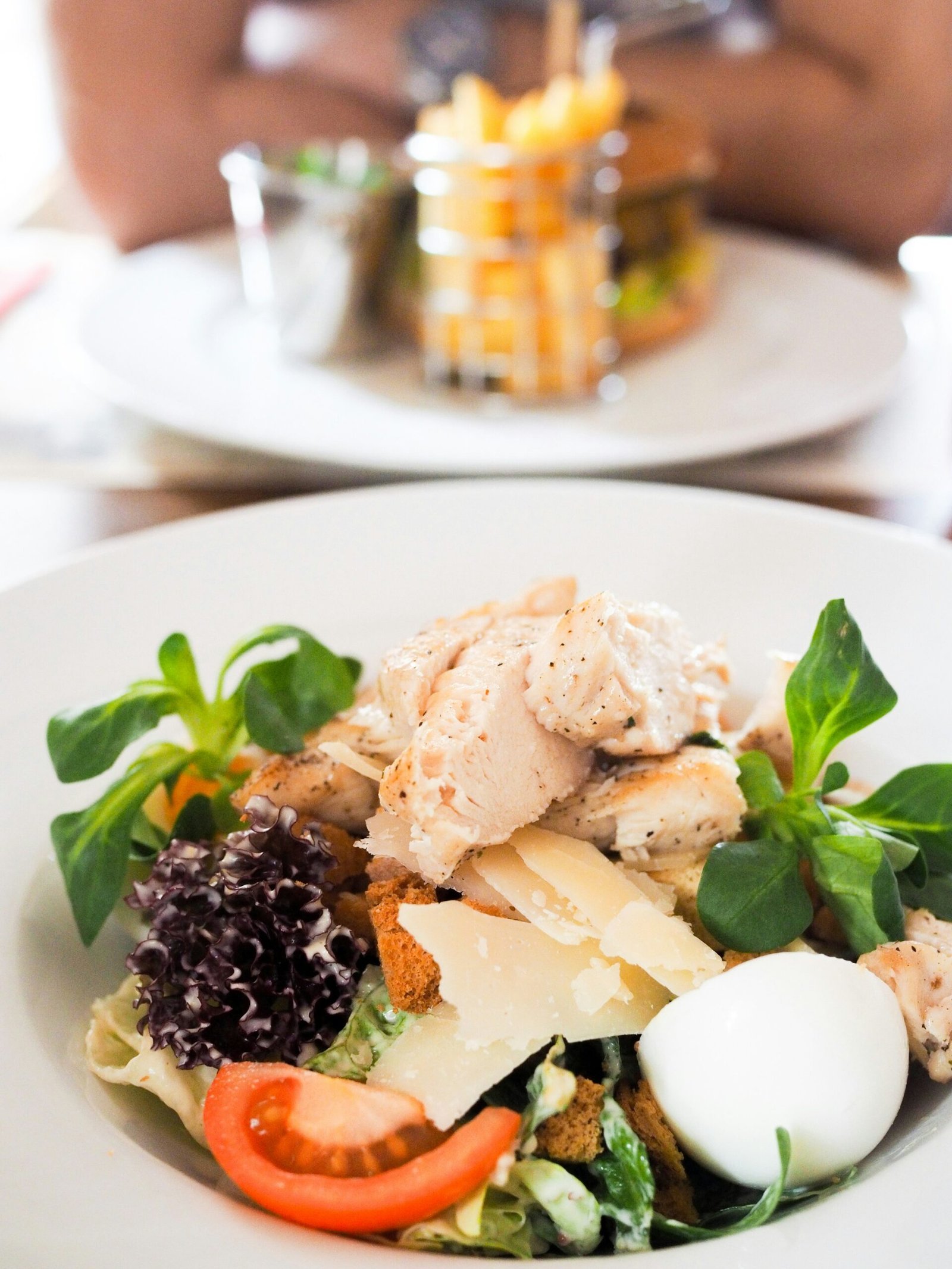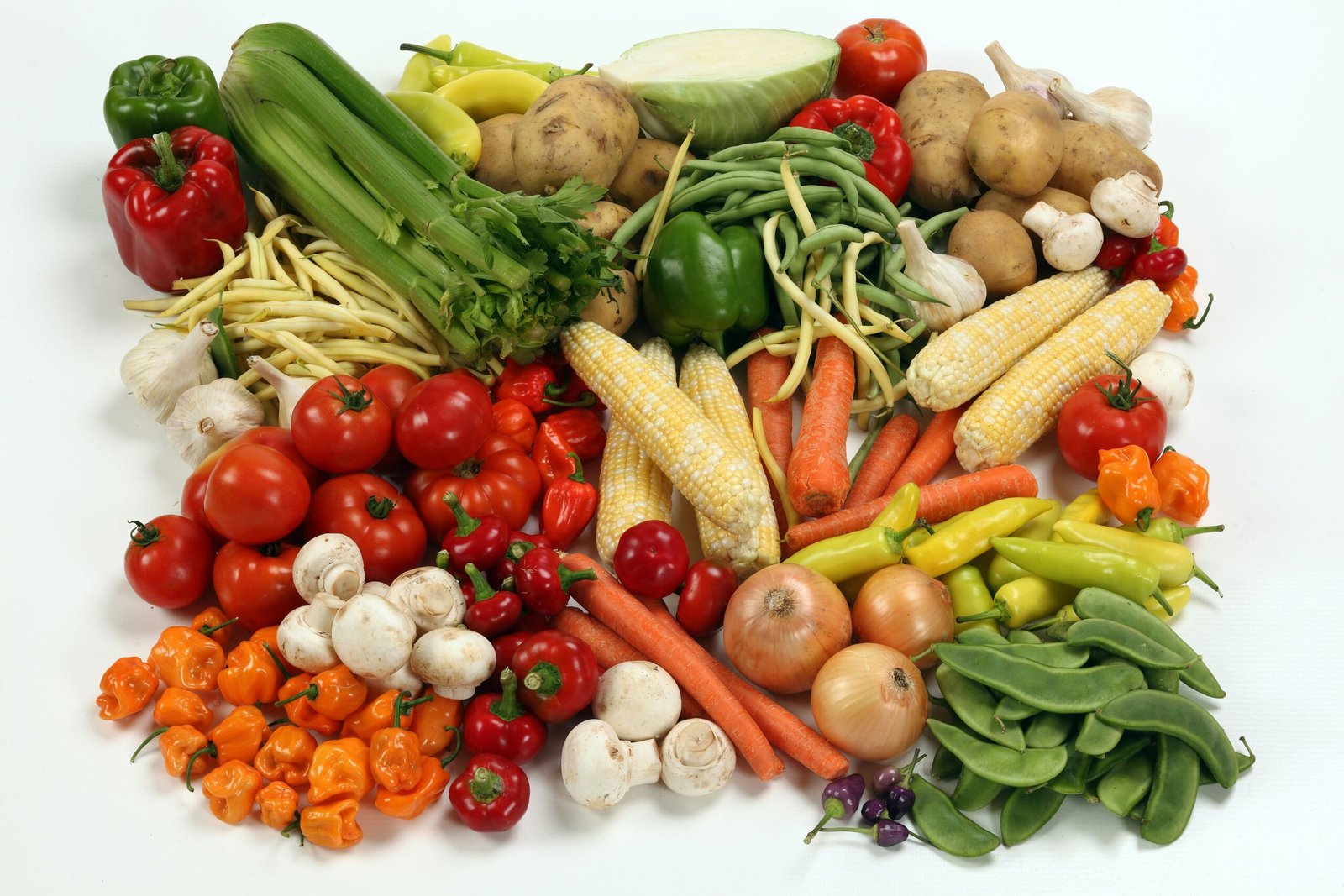Introduction to Baba Ganoush
Baba ganoush is a celebrated dish in Middle Eastern cuisine, known for its rich, smoky flavor and creamy texture. This eggplant-based dip has its roots deeply embedded in the culinary traditions of the Levant region, particularly in countries such as Lebanon and Syria. The dish is prepared primarily by roasting or grilling eggplants until they are soft and charred, imparting a distinctive smokiness that is a hallmark of authentic baba ganoush.
The cultural significance of baba ganoush extends beyond its delicious taste; it is often served during communal gatherings and festive occasions, making it a popular appetizer during celebrations such as Hanukkah. Traditionally, it is enjoyed with pita bread, vegetables, or used as part of a mezze platter, highlighting the importance of shared meals in Middle Eastern hospitality. Over the years, this dish has evolved, with various adaptations emerging in different regions, reflecting local tastes and ingredients.
One interesting fact about baba ganoush is that its name is derived from the Arabic phrase “baba ghannouj,” which translates to “pampered father,” possibly indicating its status as a favored dish among Middle Eastern families. As cultural exchanges have occurred throughout history, it has found its way into various international cuisines, gaining popularity in Western restaurants and homes alike. The traditional preparation methods can vary, with some opting for a smoky grill while others may use modern kitchen appliances like blenders or food processors for convenience. Regardless of how it is made, baba ganoush remains a beloved dish that exemplifies the essence of Middle Eastern culinary art, making it a fitting addition to any festive table during Hanukkah celebrations.
Ingredients for Baba Ganoush
To create a deliciously smoky baba ganoush, gathering the right ingredients is essential. This traditional Middle Eastern dip is not only flavorful but also boasts a creamy texture that elevates any Hanukkah celebration. The following ingredients are required:
- 2 medium-sized eggplants (approximately 1.5 lbs total) – The star ingredient, eggplants provide the rich, smoky flavor that defines baba ganoush. When grilled or roasted, they develop a unique char that enhances the overall taste.
- 3 tablespoons tahini – This sesame seed paste contributes to the creaminess of the dip and adds a nutty flavor that complements the eggplant.
- 3 tablespoons olive oil – A key component, good-quality olive oil enriches the dip’s texture and adds depth to the flavor profile. It also serves as a finishing drizzle for presentation.
- 1 tablespoon fresh lemon juice – Lemon juice brightens the flavor and balances the richness of the tahini and eggplants. Freshly squeezed juice is recommended for optimal taste.
- 2 cloves garlic (minced) – Garlic offers a pungent kick and enhances the overall flavor of the baba ganoush. Adjust the amount to your preference for a milder or stronger garlic presence.
- Salt to taste – Salt is essential in elevating the flavors of the ingredients and ensuring a well-seasoned dip.
- Pomegranate seeds and fresh parsley for garnish – These add a pop of color and freshness to the dish, enhancing its visual appeal and offering contrasting textures.
The combination of these ingredients creates a baba ganoush that is not only delicious but also celebrates the festive spirit of Hanukkah. Each component plays a critical role in achieving the desired smoky flavor and creamy consistency, making this dip a standout addition to your holiday spread.
Cooking Equipment Needed
Preparing a delicious Baba Ganoush requires specific cooking equipment to ensure optimal flavor and texture. The primary ingredient for this dish is eggplant, which needs to be roasted to bring out its rich, smoky flavor. For this purpose, one has the option of using a grill or an oven. If opting for a grill, the direct heat serves to char the skin of the eggplant beautifully, adding depth to the final product. Alternatively, an oven is equally effective for roasting, allowing for consistent heat distribution. Preheat the oven to about 400°F (200°C) and place the whole eggplant directly on the rack for approximately 30-40 minutes, or until the skin is blackened and the flesh is tender.
Once the eggplant has been roasted, a high-quality blender or food processor is essential for achieving the smooth and creamy texture synonymous with Baba Ganoush. A powerful blender will effectively puree the roasted eggplant, tahini, garlic, lemon juice, and spices together, creating a perfectly blended dip. For those without these gadgets, a potato masher or even a fork can serve as an alternative, though it may not yield the same silky result.
In addition to the aforementioned equipment, having several bowls on hand for mixing and serving is advisable. Measuring cups and spoons are also crucial for accurately assessing the ingredients, particularly for the tahini and spices that define the dish’s unique flavor. For home cooks who may not have specialized kitchen tools, consider utilizing convenient kitchen items like a hand mixer or even substituting ingredients to cater to personal preferences. By ensuring you have these essential tools, you will be well-prepared to create a delightful Baba Ganoush for your Hanukkah celebration.
Step-by-Step Instructions
Creating Baba Ganoush is a straightforward process that yields delicious results. Below are easy-to-follow steps to guide you through making this smoky eggplant dip, perfect for your Hanukkah celebrations.
Step 1: Preparing the Eggplant
Start by selecting one to two medium-sized eggplants. Preheat your oven to 450°F (232°C). While the oven is heating, wash and dry the eggplants thoroughly. Using a fork, poke several holes into each eggplant to allow steam to escape during cooking. This step helps prevent the eggplants from bursting. Then, place them on a baking sheet and roast for about 30-40 minutes until the skin is blistered and the flesh is soft.
Step 2: Cooling and Scooping
After roasting, remove the eggplants from the oven and let them cool for about 15 minutes until they are manageable to handle. Using a sharp knife, cut the eggplants in half lengthwise and scoop out the soft flesh with a spoon into a bowl. Discard the skin.
Step 3: Blending the Ingredients
Next, take the scooped eggplant and transfer it to a food processor. Add 2-3 tablespoons of tahini, 2-3 tablespoons of freshly squeezed lemon juice, 2 tablespoons of olive oil, 1-2 cloves of minced garlic, and a pinch of salt. You may also add cumin for extra flavor if desired. Blend these ingredients until they reach a smooth and creamy consistency. If the mixture seems too thick, add a little more olive oil or water to achieve your preferred texture.
Step 4: Final Adjustments
Taste the Baba Ganoush and adjust the seasoning as necessary, adding more salt, lemon juice, or tahini to suit your preference. Blend again briefly to incorporate any additions.
Step 5: Serving
Transfer the Baba Ganoush to a serving bowl and cover with a drizzle of olive oil and a sprinkle of paprika or smoked paprika for presentation. This dish is best served room temperature or slightly chilled, accompanied by pita bread, fresh vegetables, or crackers. Enjoy your deliciously smoky Baba Ganoush!
Pro Tips for Perfect Baba Ganoush
Creating the quintessential baba ganoush involves a few critical techniques that can significantly elevate the flavor and texture of this beloved dip. One of the most important aspects to consider is the roasting process of the eggplant. For achieving that perfect level of smokiness, opt for charring the skin directly over an open flame, such as a gas burner or a grill. This method infuses the eggplant with a rich, smoky flavor. If an open flame is not available, roasting the eggplant in the oven until the skin is blistered will impart a flavorful depth, though it may lack some of the smoky nuances.
While roasting, it is advisable to let the eggplant cool completely before peeling. This allows steam to accumulate, which makes it easier to remove the skin and ensures a smoother consistency. For the most velvety texture, use a fork or a food processor to puree the roasted flesh, but be cautious not to overprocess; a few small chunks can provide a delightful contrast to the creamy base.
In terms of ingredient balance, utilizing tahini can add an essential creaminess and enhance flavor complexity. Start with a small amount and gradually adjust it to your liking. Furthermore, incorporating fresh lemon juice, garlic, and olive oil will brighten the overall taste. It’s crucial to taste as you mix to find the right equilibrium of flavors.
A common pitfall in baba ganoush preparation is underseasoning. Remember that the smoky flavor should be complemented with enough salt to ensure a harmonious taste. Additionally, be wary of adding too much liquid; too much oil or water can lead to a runnier texture that lacks the desired creamy consistency. By keeping these tips in mind, your baba ganoush will not only be delicious but also a gorgeous centerpiece for your Hanukkah celebration.
Serving Suggestions
Baba Ganoush is not only a delight for the palate but also a visually appealing dish, making it an excellent choice for festive occasions such as Hanukkah. When it comes to serving this smoky, creamy eggplant dip, presentation plays a crucial role. Consider placing the Baba Ganoush in a shallow bowl and create a swirl on top with a drizzle of high-quality olive oil. A sprinkle of smoked paprika or fresh herbs, such as parsley or cilantro, can add a vibrant touch and elevate the overall look.
Traditionally, Baba Ganoush is served with warm pita bread. This classic pairing allows guests to scoop the dip with easily manageable pieces, making it an ideal starter for gatherings. Additionally, you might want to include an assortment of fresh vegetables such as cucumber, bell peppers, and carrot sticks, which add a crunchy contrast to the smooth texture of the Baba Ganoush. These options not only provide a healthier snacking alternative but also enhance the visual appeal of the serving platter.
For those looking to incorporate a modern twist, consider serving Baba Ganoush alongside artisanal crackers or toasted bread. Flavored varieties, such as rosemary or sesame, can introduce exciting new dimensions to this traditional dish. Additionally, you can create a unique mezze board by including other Middle Eastern dips, olives, and marinated vegetables, inviting your guests to explore a fusion of flavors. Adding pickled vegetables or spicy harissa can offer intriguing flavor contrasts that further complement the rich smokiness of the Baba Ganoush.
Ultimately, when it comes to serving Baba Ganoush, the possibilities are endless. Whether you choose to stick with time-honored traditions or embrace creative, modern adaptations, this beloved dip is sure to be a hit at any Hanukkah celebration.
Variations of Baba Ganoush
Baba Ganoush is a versatile dish that can be adapted to suit various tastes and preferences. While the traditional recipe typically features roasted eggplant, tahini, garlic, lemon juice, and olive oil, there are numerous ways to enhance and vary its flavor profile. Exploring different spices, herbs, or other roasted vegetables can lead to a unique culinary experience, making Baba Ganoush a delightful addition to any Hanukkah celebration.
One popular variation involves the addition of spices such as cumin or smoked paprika. These spices bring a warm, earthy note that complements the smokiness of the roasted eggplant. Simply mix in a teaspoon of either spice while blending the ingredients for a flavor boost. For those who prefer a bit of heat, a pinch of cayenne pepper or a diced jalapeño can be included, adding a spicy kick that contrasts beautifully with the creamy texture of the dish.
Herbs are another excellent way to create a distinctive Baba Ganoush. Adding fresh herbs like parsley, cilantro, or mint can introduce a refreshing element to the spread. Very finely chop the herbs and fold them into the mixture after blending, ensuring that their vibrant flavors remain intact. Alternatively, consider using dried herbs such as oregano or thyme for an herbaceous twist.
Incorporating other roasted vegetables can also yield interesting results. For example, blending in roasted red peppers or sun-dried tomatoes can enrich the dish with additional depth and sweetness. If desired, tahini can be modified; some cooks prefer a lighter texture by substituting a portion of tahini with yogurt, creating a creamy Baba Ganoush that is both luscious and tangy.
Finally, topping your Baba Ganoush can create visual appeal as well as complexity in flavor. Consider drizzling extra virgin olive oil, sprinkling pomegranate seeds, or adding toasted pine nuts or sesame seeds on top before serving. Each of these elements not only enhances the taste but also transforms the overall presentation, making your Baba Ganoush an inviting centerpiece at any gathering.
Nutritional Information
Baba Ganoush is not only a flavorful dip but also a nutritional powerhouse that aligns well with a balanced diet. Made primarily from eggplant, tahini, olive oil, garlic, and lemon juice, each ingredient contributes to the overall health benefits. A typical serving of Baba Ganoush, approximately two tablespoons, contains around 70-100 calories, largely depending on the amount of olive oil used.
One of the significant advantages of Baba Ganoush is its low-calorie count compared to many other dips. The primary component, eggplant, is rich in dietary fiber, which aids in digestion and helps maintain a feeling of fullness. Additionally, it is low in carbohydrates, making it suitable for those on low-carb or ketogenic diets. The healthy fats from tahini and olive oil contribute to heart health, offering a dose of omega-3 and omega-6 fatty acids.
When considering protein content, Baba Ganoush provides about 2 grams per serving, primarily from the tahini. While this is not a significant source of protein, it does help enhance the dish’s nutritional profile when paired with whole-grain pita or vegetable sticks. Furthermore, the garlic used in Baba Ganoush is known for its immune-boosting properties and may contribute to lower cholesterol levels.
In terms of vitamins and minerals, Baba Ganoush is a source of essential nutrients, including vitamin E, which acts as an antioxidant, and vitamin B6, which supports brain health. The presence of potassium in eggplant also aids in regulating blood pressure. Overall, Baba Ganoush is a nutritious option that can be easily integrated into a healthy lifestyle while providing delicious flavors perfect for any festive celebration, including Hanukkah.
Pairing Drinks with Baba Ganoush
When it comes to enhancing the flavors of Baba Ganoush, selecting the right beverages can elevate this dish to new heights. Its creamy, smoky, and slightly tangy flavor profile pairs beautifully with a variety of drinks, including wines, cocktails, and non-alcoholic options. Understanding the ideal pairings will enhance the enjoyment of this delicious dish during your Hanukkah celebrations.
For wine lovers, a crisp white wine such as Sauvignon Blanc or a light-bodied red like Pinot Noir can provide an excellent complement. The acidity of Sauvignon Blanc cuts through the creaminess of the Baba Ganoush, while the fruity notes of Pinot Noir add a delightful contrast. Serve these wines chilled, ideally at a temperature between 45°F to 50°F for whites and 55°F to 60°F for reds, to fully appreciate their profiles.
Those who prefer cocktails can enjoy a refreshing Gin and Tonic or an herbal Mojito. The botanical elements of gin work well with the smokiness of the Baba Ganoush, and the tonic adds a refreshing brightness. Meanwhile, a Mojito, with its minty and citrus flavors, cleanses the palate and complements the dish’s richness. Aim for serving cocktails over ice to keep them cool and inviting.
For a non-alcoholic option, consider serving a zesty lemonade or a mint-infused sparkling water. The acidity of the lemonade enhances the smoky notes, while the sparkling water provides a refreshing alternative. Both drinks work well when served chilled, allowing your guests to remain refreshed while enjoying their Baba Ganoush.
In conclusion, carefully selecting drinks that pair harmoniously with Baba Ganoush can greatly enhance your culinary experience. Whether you choose wine, cocktails, or refreshing non-alcoholic options, these choices will highlight the flavors of this traditional dish, making your Hanukkah celebrations even more memorable.
Cultural Significance of Baba Ganoush
Baba Ganoush is not merely a culinary delight; it holds deep cultural significance across various Middle Eastern countries. Originating from the Levant region, this dish is primarily made from roasted eggplant, tahini, olive oil, lemon juice, and garlic. Each ingredient reflects a connection to the agricultural heritage and culinary traditions of the area. Its creamy texture and smoky flavor have made it a staple in many households, where it is often served as part of mezze, a traditional Middle Eastern appetizer platter that promotes communal eating.
During festive occasions, such as Hanukkah, Baba Ganoush takes on an added layer of importance. The communal aspect of sharing food resonates well with the spirit of the holiday, where families and friends gather to celebrate and partake in festive meals. The preparation and sharing of Baba Ganoush foster connections among people, enhancing the sense of community and belonging during the festivities. Moreover, the act of dipping pita bread into Baba Ganoush encourages interaction among guests, making the eating experience more engaging and enjoyable. This shared ritual also highlights the communal values deeply embedded in Middle Eastern culture.
Additionally, Baba Ganoush is often found at special occasions, such as weddings, holidays, and family gatherings. Its presence in these events exemplifies hospitality and generosity, as offering an array of dishes, including Baba Ganoush, signifies warmth and appreciation for guests. The dish not only nourishes the body but also the spirit, creating lasting memories and deepening bonds. By integrating Baba Ganoush into celebrations like Hanukkah, individuals honor both their heritage and the collective joy of feasting together.
Storage and Reheating Tips
Proper storage of Baba Ganoush is essential to maintain its delicious flavor and texture after the initial serving. To store any leftover Baba Ganoush, transfer it to an airtight container. This will help prevent the dip from absorbing odors from other foods, as well as avoid oxidation, which can alter its taste. The Baba Ganoush can be refrigerated for up to four to five days. Keeping it well covered is crucial to ensuring that it retains its smokiness and freshness.
If you plan to keep Baba Ganoush for a longer period, freezing is an excellent option. When you freeze Baba Ganoush, you should ensure it is in an airtight container or a freezer-safe bag. Be sure to remove as much air as possible from the bag to prevent freezer burn. Frozen Baba Ganoush can last up to three months. When ready to use it, transfer the container from the freezer to the refrigerator to allow for gradual thawing, which helps maintain its creamy consistency.
When it comes time to reheat or revive the refrigerated or thawed Baba Ganoush, it is important to do so gently, as overheating may adversely affect its texture. The best method is to take your stored Baba Ganoush and place it in a bowl. Allow it to come to room temperature, stirring occasionally. If you want to warm it slightly, you can place it in a microwave for brief intervals, usually 15 to 30 seconds at a time. Afterward, if the dip appears somewhat dry, add a drizzle of olive oil or a splash of lemon juice to restore its creaminess. This approach ensures your Baba Ganoush remains as enjoyable as when it was first prepared.
Common Questions About Baba Ganoush
Baba Ganoush, a beloved Middle Eastern dip, often raises various questions for those looking to prepare it at home. One of the most common inquiries revolves around the choice of eggplant. The most widely used variety for Baba Ganoush is the globe eggplant, primarily due to its creamy texture and balanced flavor. Some cooks, however, may opt for Japanese or Italian eggplants, which are smaller and milder. These variations can affect the final taste, so it’s advisable to choose according to personal preference and availability.
Another frequent question pertains to the preparation method. While traditional recipes involve a charred or smoky flavor achieved by roasting the eggplant over an open flame, some prefer the convenience of baking or grilling. Using these methods can still yield a delicious Baba Ganoush, although it might lack the distinct smoky undertones that a flame offers. To enhance the smokiness, incorporating a touch of smoked paprika may also be a suitable alternative.
Ingredient substitutions often come up, especially concerning tahini. For those with sesame allergies or who wish to reduce the calorie content, alternatives such as sunflower seed butter or a mixture of yogurt and lemon juice can serve as replacements. Additionally, some individuals inquire about the presence of garlic. The amount can be adjusted according to one’s taste, but it is pivotal to note that garlic contributes significantly to the dip’s overall flavor profile.
Finally, many seek advice on flavor adjustments. Increasing the acidity with more lemon juice, or enhancing the richness with extra olive oil, can tailor the Baba Ganoush to individual preferences. This flexibility makes Baba Ganoush an adaptable dish perfect for any gathering, particularly during festive occasions like Hanukkah. The recipe warms hearts around the table, showcasing the beauty of culinary exploration.
Feedback and Variations from Other Cooks
As we explore the delightful world of Baba Ganoush, it is important to acknowledge the rich tapestry of variations that can arise from this classic dish. Community feedback provides invaluable insights, enhancing our collective appreciation for culinary creativity and experimentation. Many cooks have taken this foundational recipe and personalized it to suit their tastes, encouraging others to think outside the box.
For instance, some chefs infuse their Baba Ganoush with unique flavor profiles by introducing ingredients like roasted garlic, sun-dried tomatoes, or even a hint of smoked paprika. These additions not only enhance the flavor but also elevate the visual appeal of the dish, making it a stunning centerpiece for any gathering. Meanwhile, others might opt for a lighter version by omitting tahini or using yogurt to create a creamier texture that is lower in calories.
Another popular variation involves the use of different types of eggplant. While the traditional recipe calls for globe eggplant, many cooks have experimented with varieties like Japanese or Thai eggplants, which can lead to distinct taste experiences. Additionally, some individuals add fresh herbs such as parsley, cilantro, or mint to infuse a burst of freshness into the spread. The beauty of Baba Ganoush lies in its versatility, allowing for endless adaptations that reflect individual preferences.
Readers are encouraged to share their unique twists on Baba Ganoush and any feedback regarding this recipe. Whether it’s a beloved family secret, a regional influence, or a simple substitution that worked well, every contribution enriches the community. Engaging with fellow food enthusiasts opens the door to discovering new techniques and flavors, ultimately creating a more collaborative cooking environment.
Hanukkah Traditions and Baba Ganoush
Hanukkah, also known as the Festival of Lights, is a time when families gather to celebrate the miracle of the oil that lasted eight days in ancient times. This joyous occasion is characterized by various traditions, including the lighting of the menorah, playing dreidel, and indulging in delicious foods. Among these culinary delights, Baba Ganoush has emerged as a unique addition to festive meals, offering a flavorful nod to the cultural diversity of the holiday.
Baba Ganoush, a creamy roasted eggplant dip, complements the traditional fare often seen at Hanukkah gatherings, such as latkes and sufganiyot. Its presence at the table reflects a broader theme of sharing and togetherness, aligning perfectly with the spirit of the holiday. Prepared with ingredients such as tahini, garlic, and lemon juice, this dish not only provides a nutritious option but also acts as a conversation starter among family and friends.
The versatility of Baba Ganoush allows it to beautifully accompany a variety of dishes, from pita bread to fresh vegetables, making it an ideal appetizer. As families come together during Hanukkah, they can enjoy this smokey dip, enhancing the communal experience of sharing meals. Furthermore, Baba Ganoush can serve as a bridge between traditional and modern cooking practices, illustrating how ancient customs can be adapted to fit contemporary tastes.
Incorporating Baba Ganoush into Hanukkah celebrations emphasizes the importance of unity and family bonds. As guests savor this dip, they partake not only in a delightful culinary experience but also in the rich cultural heritage of Jewish cuisine. By embracing Baba Ganoush during Hanukkah, families can bring a unique and delicious element to their holiday gatherings, fostering a sense of warmth and togetherness that is at the heart of the festivities.
Links to Other Recipes for Hanukkah
As you prepare to enjoy Baba Ganoush for your Hanukkah celebrations, consider expanding your menu with additional traditional recipes that will complement this smoky dip beautifully. Below is a selection of external links to various Hanukkah recipes, from classic dishes to modern interpretations, providing diversity and flavor to your festive gatherings.
One essential dish to incorporate is Latkes. These crispy potato pancakes are a beloved Hanukkah staple, perfectly suited for dipping into Baba Ganoush. The combination of the creamy eggplant dip with the crunchy texture of the latkes creates a delightful contrast that will please your guests at any gathering.
Another recipe to explore is Sufganiyot, which are traditional jelly-filled doughnuts. These sweet treats light up any festive table and can offer a delicious contrast to savory dishes. While Baba Ganoush takes the spotlight as an appetizer, these doughnuts make for an enjoyable dessert, adding a sweet ending to your meal.
For those looking to include more vegetables, consider the Roasted Vegetable Medley. This dish features seasonal root vegetables that can be seasoned and roasted to perfection, serving as a colorful side that not only pairs well with Baba Ganoush but also enhances the overall presentation of your festive spread.
Moreover, a simple Green Salad can provide a refreshing balance to the richness of Baba Ganoush and other festive dishes. Incorporating seasonal greens topped with a light vinaigrette will add another layer of flavor, along with texture to your Hanukkah table.
These suggested recipes can help round out your Hanukkah feast, making your celebration not only delicious but also memorable. By exploring these links, you will discover diverse flavors and traditions that can enhance your enjoyment of Baba Ganoush and create a remarkable dining experience for all involved.
Conclusion
As we come to the end of this exploration into the art of making Baba Ganoush, we hope that you feel inspired to incorporate this delightful dish into your Hanukkah celebrations. This traditional Middle Eastern dip, with its rich, smoky flavor, can serve as a perfect addition to your festive table. The combination of roasted eggplant, tahini, garlic, and olive oil creates a wonderfully creamy texture that enhances any gathering, making it a crowd favorite.
We encourage you to try out the Baba Ganoush recipe shared in this blog post. Dive into the culinary process of preparing this dish, and let its unique taste transport you and your loved ones through the aromas and colors of the Mediterranean. Whether you serve it with pita bread, fresh vegetables, or as part of a mezze platter, it is sure to impress and delight your guests.
Incorporating Baba Ganoush into your festivities not only celebrates tradition but also embraces the spirit of togetherness that Hanukkah represents. As you gather around the table with family and friends, we hope this flavorful dish sparks conversations and creates lasting memories. We also invite you to share your experiences and any variations you might come up with as you prepare this cherished recipe.
Thank you for taking the time to explore the joys of Baba Ganoush with us. May your Hanukkah celebrations be filled with warmth, joy, and delicious food. We look forward to hearing how you make this beloved dish your own!














